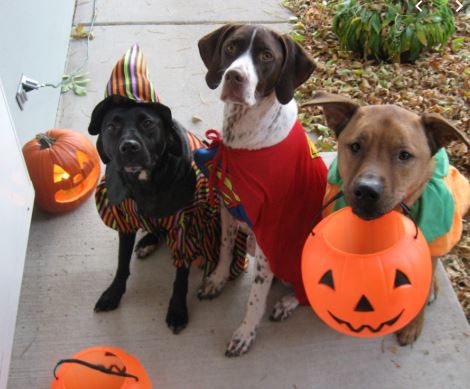
As Halloween approaches, it's important that pet owners are aware of the danger that chocolate boxes and candies pose for our pets. Dogs are infamous for their less-than-discriminating taste in foods; with chocolate, they appear as powerless to resist as we are. And while most cats won't eat it on their own, owners or others who think they're giving the cat a treat can coax them to eat it. So it's important to keep chocolate and treats out of reach for our furry friends this time of year (and every day!).
The components of chocolate that make it toxic to pets are caffeine and theobromine, which fall into a class of drugs called methylxanthines. These are the same ingredients that make chocolate a stimulant in people. Simply put, pets are more sensitive to their effects. Where people might experience a feeling of alertness or jitters, pets experience signs ranging from vomiting, diarrhea, tremors, elevated heart rate, heart rhythm abnormalities, and even death.
In terms of toxicity, not all chocolates are created equal. Different forms of chocolate have different levels of theobromine with different corresponding risks of toxic effects. As a rule of thumb, the more bitter the chocolate, the more likely it is to cause a problem. Baker's chocolate, cocoa powder, and dark chocolate are the most potent and dangerous forms. Baker's chocolate is approximately seven times as toxic as milk chocolate. The effects are also related to a pet's weight, so smaller pets are more at risk. If your 70-pound Labrador eats a single Hershey's kiss, you're probably ok. If your 5-pound Yorkie Poo eats a bar of dark chocolate, it's time to get the keys and head to the hospital. For anything in between, call your veterinarian. Let us know roughly how much chocolate your pet ate, and we'll tell you if there is a significant risk.
The hallmark of treatment is decontamination of the stomach, and the earlier that treatment is initiated, the more effective it is. Most dogs will be made to vomit as soon as they arrive, and every veterinarian and veterinary technician is familiar with the sickly, sweet smell of chocolaty dog vomit. Further treatments depend on the amount of ingested and if the dog shows signs of toxicity.
Now that we've vilified chocolate, how about sugarless treats? Xylitol, a common sugar substitute, is also very toxic to our pets. Xylitol is a sweetener found most commonly in sugarless gums but is also present in some candies, mints, cough drops, and toothpaste.
If ingested by a dog, xylitol mimics the effects of sugar and causes the body to release insulin. This causes blood sugar levels to plummet, resulting in collapse, seizures, and death. The toxin can also have delayed effects on the liver; some dogs can go into liver failure up to 48 hours later. In smaller dogs, as little as a single piece of gum can cause toxicity.
If you suspect your pet ingested xylitol, as with chocolate, the earlier we treat it, the better the chance of a good long-term outcome. October is a sweet month, and your pet will want to join in on the festivities. If your dog does get into trouble, as they're known to do, don't panic; your veterinarian is here to help. Bishop Ranch Veterinary Center is open Monday - Sunday, seven days a week - 925.866.8387







